Heat rash on your face. Heat Rash on Face: Symptoms, Treatments, and Home Remedies for Quick Relief
What are the common symptoms of heat rash on the face. How can you effectively treat heat rash at home. What are the best remedies for soothing facial heat rash. When should you seek medical attention for heat rash symptoms.
Understanding Heat Rash: Causes and Types
Heat rash, also known as prickly heat or miliaria, is a common skin condition that occurs when sweat becomes trapped under the skin. It typically develops in hot, humid weather when perspiration clogs the sweat ducts, leading to inflammation and a characteristic rash. While it can affect any part of the body, heat rash on the face can be particularly uncomfortable and noticeable.
There are three main types of heat rash:
- Miliaria crystallina: The mildest form, characterized by clear, fluid-filled bumps
- Miliaria rubra: Also known as prickly heat, causing red, itchy bumps
- Miliaria profunda: The most severe type, resulting in larger, firm bumps
Understanding the type of heat rash you’re experiencing can help guide appropriate treatment and relief strategies.
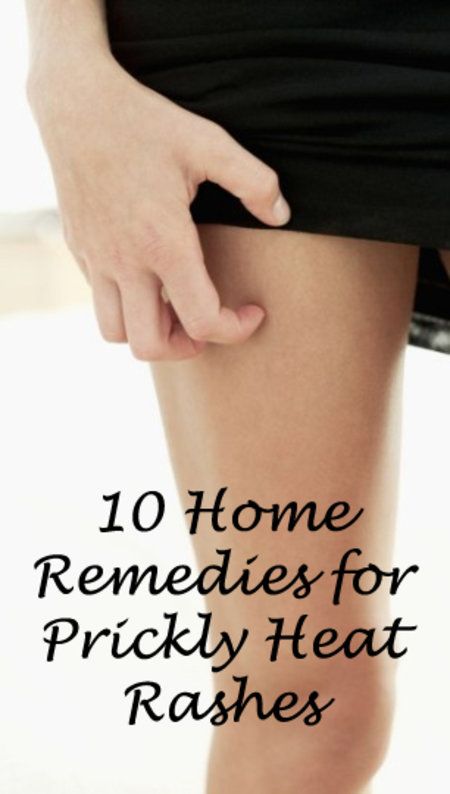
Recognizing Symptoms of Facial Heat Rash
Identifying heat rash on your face is crucial for prompt treatment. Common symptoms include:
- Small, red bumps or blisters
- Itching or prickling sensation
- Mild swelling or inflammation
- Skin feeling warm to the touch
- Discomfort or burning sensation
Does heat rash always itch? Not necessarily. While itching is a common symptom, some people may experience only a mild prickling sensation or no discomfort at all, especially with miliaria crystallina.
Effective Home Remedies for Facial Heat Rash
Fortunately, there are several home remedies that can provide relief for heat rash on your face:
- Cool compresses: Apply a cool, damp cloth to the affected area to soothe inflammation and reduce itching.
- Calamine lotion: This over-the-counter product can help relieve itching and discomfort. Be careful to avoid the eyes and mouth when applying to the face.
- Oatmeal paste: Create a paste using colloidal oatmeal and cool water to calm irritated skin.
- Aloe vera gel: Known for its soothing properties, aloe vera can help cool the skin and reduce inflammation.
- Baking soda bath: For widespread heat rash, soaking in a cool bath with baking soda can provide relief.
How long does it take for heat rash to clear up with home remedies? With proper care and treatment, most cases of heat rash resolve within 3-7 days. However, individual recovery times may vary depending on the severity of the rash and how quickly treatment is initiated.
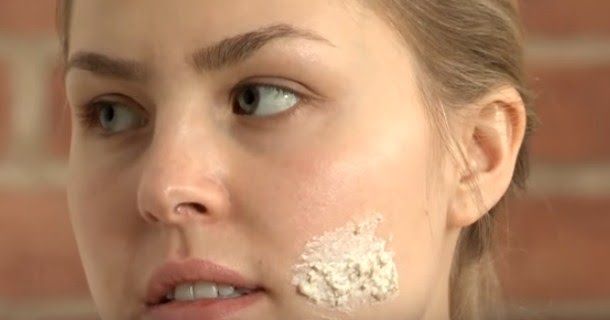
Medical Treatments for Persistent Heat Rash
While most cases of heat rash can be managed at home, some situations may require medical intervention. Healthcare providers may recommend:
- Topical corticosteroids: To reduce inflammation and itching in severe cases
- Antihistamines: To alleviate itching and discomfort
- Antibiotics: If the heat rash becomes infected
When should you see a doctor for heat rash on your face? Consult a healthcare professional if your symptoms persist for more than a week, if the rash spreads or worsens, or if you develop signs of infection such as increased pain, swelling, or fever.
Preventing Heat Rash: Tips for Keeping Your Face Cool
Prevention is key when it comes to heat rash. Here are some strategies to keep your face cool and prevent heat rash:
- Stay hydrated: Drink plenty of water to help regulate your body temperature
- Wear breathable fabrics: Choose lightweight, moisture-wicking materials for face coverings and clothing
- Use non-comedogenic sunscreen: Opt for oil-free, lightweight sunscreens that won’t clog pores
- Take cool showers: Rinse off sweat and cool down your skin regularly
- Use a facial mist: Carry a cooling facial spray to refresh your skin throughout the day
Is it possible to completely prevent heat rash? While it’s difficult to guarantee complete prevention, especially in hot and humid climates, these measures can significantly reduce your risk of developing heat rash on your face.

Special Considerations for Babies and Children
Infants and young children are particularly susceptible to heat rash due to their underdeveloped sweat glands and difficulty regulating body temperature. When treating heat rash in babies and children:
- Use cool, damp cloths to soothe the affected areas
- Dress them in loose-fitting, breathable clothing
- Keep the environment cool and well-ventilated
- Avoid oil-based products that can further clog pores
- Consider using anhydrous lanolin to prevent sweat duct blockage (after patch testing)
How can you differentiate between heat rash and other skin conditions in babies? Heat rash typically appears as small, red bumps or clear blisters, while other conditions like eczema or allergic reactions may have different characteristics. When in doubt, consult a pediatrician for proper diagnosis and treatment.
Natural Remedies to Soothe Facial Heat Rash
In addition to conventional treatments, several natural remedies may help alleviate heat rash symptoms:
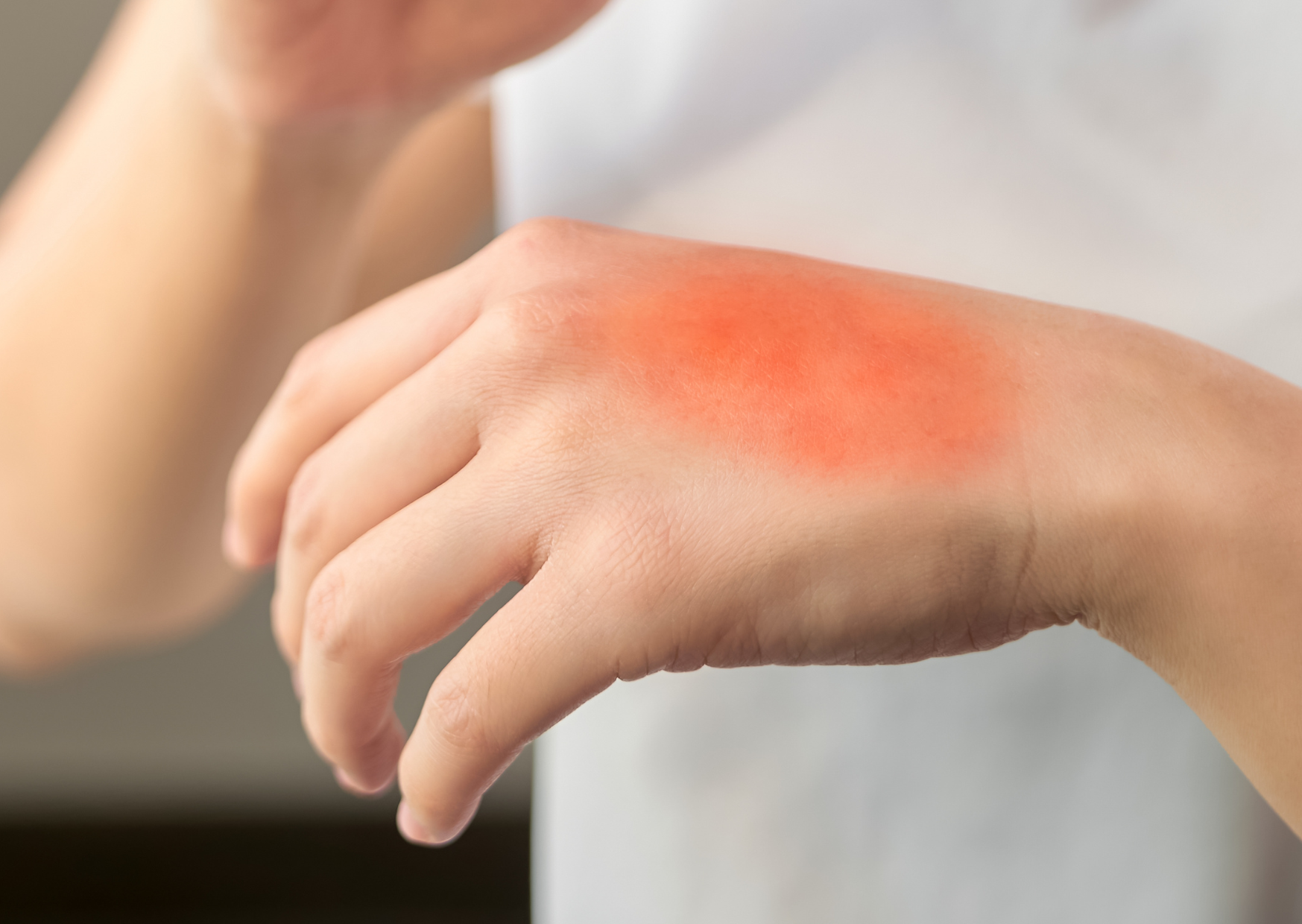
- Cucumber slices: Place cool cucumber slices on the affected areas to reduce inflammation
- Neem leaves: Create a paste from neem leaves known for their antimicrobial properties
- Sandalwood powder: Mix with rose water to create a cooling, soothing paste
- Cold milk compress: Apply cold milk to the skin to calm irritation
- Green tea: Use cooled green tea as a facial rinse to benefit from its anti-inflammatory properties
Are natural remedies as effective as medical treatments for heat rash? While natural remedies can provide relief for mild cases, severe or persistent heat rash may require medical intervention. Always consult with a healthcare provider if symptoms worsen or fail to improve with home care.
Long-Term Skin Care After Heat Rash
Once your heat rash has cleared, it’s important to maintain good skin care practices to prevent recurrence and promote overall skin health:
- Establish a gentle cleansing routine using non-irritating products
- Exfoliate regularly to prevent pore blockages
- Use lightweight, non-comedogenic moisturizers
- Protect your skin from sun damage with appropriate SPF
- Stay mindful of heat and humidity levels, taking precautions as needed
Can heat rash leave permanent marks on your face? In most cases, heat rash resolves without leaving scars. However, severe cases or those complicated by infection may potentially lead to temporary or permanent skin discoloration. Proper care and timely treatment can minimize this risk.
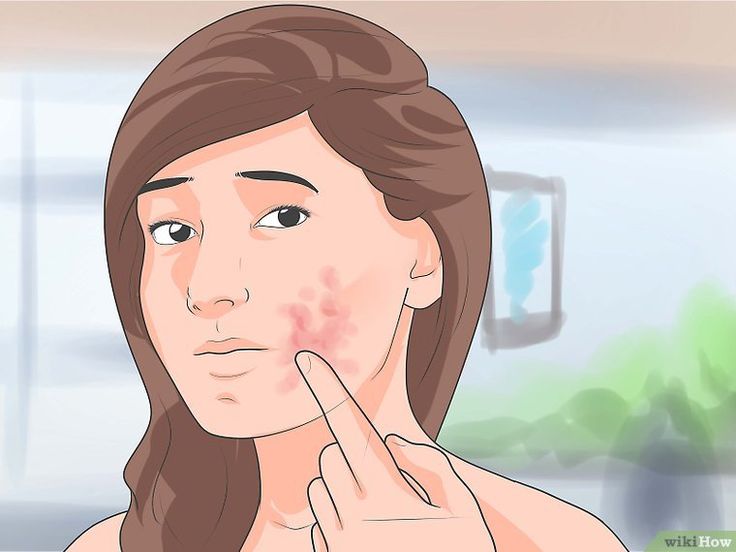
By understanding the causes, symptoms, and treatment options for heat rash on your face, you can effectively manage this common skin condition and maintain healthy, comfortable skin even in challenging weather conditions. Remember to listen to your body, stay cool, and seek medical advice if heat rash symptoms persist or worsen.
Symptoms, Treatments, and Home Remedies
Heat Rash On Face: Symptoms, Treatments, and Home Remedies
- Health Conditions
- Featured
- Breast Cancer
- IBD
- Migraine
- Multiple Sclerosis (MS)
- Rheumatoid Arthritis
- Type 2 Diabetes
- Articles
- Acid Reflux
- ADHD
- Allergies
- Alzheimer’s & Dementia
- Bipolar Disorder
- Cancer
- Crohn’s Disease
- Chronic Pain
- Cold & Flu
- COPD
- Depression
- Fibromyalgia
- Heart Disease
- High Cholesterol
- HIV
- Hypertension
- IPF
- Osteoarthritis
- Psoriasis
- Skin Disorders and Care
- STDs
- Featured
- Discover
- Wellness Topics
- Nutrition
- Fitness
- Skin Care
- Sexual Health
- Women’s Health
- Mental Well-Being
- Sleep
- Product Reviews
- Vitamins & Supplements
- Sleep
- Mental Health
- Nutrition
- At-Home Testing
- CBD
- Men’s Health
- Original Series
- Fresh Food Fast
- Diagnosis Diaries
- You’re Not Alone
- Present Tense
- Video Series
- Youth in Focus
- Healthy Harvest
- No More Silence
- Future of Health
- Wellness Topics
- Plan
- Health Challenges
- Mindful Eating
- Sugar Savvy
- Move Your Body
- Gut Health
- Mood Foods
- Align Your Spine
- Find Care
- Primary Care
- Mental Health
- OB-GYN
- Dermatologists
- Neurologists
- Cardiologists
- Orthopedists
- Lifestyle Quizzes
- Weight Management
- Am I Depressed? A Quiz for Teens
- Are You a Workaholic?
- How Well Do You Sleep?
- Tools & Resources
- Health News
- Find a Diet
- Find Healthy Snacks
- Drugs A-Z
- Health A-Z
- Health Challenges
- Connect
- Breast Cancer
- Inflammatory Bowel Disease
- Psoriatic Arthritis
- Migraine
- Multiple Sclerosis
- Psoriasis
Medically reviewed by Cynthia Taylor Chavoustie, MPAS, PA-C — By Grace Gallagher on May 17, 2021
Heat rash, also known as prickly heat, is a painful rash that often appears in humid or hot weather. Heat rash happens to everyone from babies to adults, and is typically caused by sweat getting trapped under the skin.
Heat rash happens to everyone from babies to adults, and is typically caused by sweat getting trapped under the skin.
It can appear on any part of the body including the face, and the rash develops when the sweat duct becomes clogged. It typically happens on hot, humid days when sweat stays in contact with skin for long periods of time.
The good news is that heat rash will typically clear on its own eventually, but there are treatment options and home remedies that can expedite its healing. Treatment will vary for babies and adults.
Babies
Children have warmer base body temperatures than adults do, and children are also less able to regulate their body temperatures. That means that if you see a rash on your child, it could potentially be a heat rash even if it doesn’t feel particularly hot to the touch.
Treatment options for heat rash in babies and children include:
- Cooling the skin with water. If the rash is in a small area like the face, you can dab a cool washcloth onto the affected area to cool down the skin.
 If the rash is all over, try a cool bath without soap.
If the rash is all over, try a cool bath without soap. - Use calamine lotion. Calamine lotion is safe for children, but when using it on the face avoid the mouth and eyes. It can help calm itching associated with heat rash.
- Try anhydrous lanolin. Anhydrous lanolin is often found in nipple creams, and it can keep the sweat ducts from getting blocked. If you or your child are sensitive to wool, do not use lanolin as it is sourced from sheep’s wool. If using lanolin for the first time, try a patch test on their forearm before applying to the face.
- Make a paste with oatmeal. Oatmeal can help calm itching and inflammation. If you make an oatmeal paste for your child’s face, be sure its room temperature or cool, and not warm or hot which could further irritate the skin.
- Avoid oil-based products. Products that contain oil, especially petroleum or mineral oils, can further clog the sweat ducts.
Adults
All of the above recommendations to treat heat rash in children are also appropriate for adults. In addition, adults experiencing heat rash can try the following:
In addition, adults experiencing heat rash can try the following:
- Wear a sweat-wicking hat. This will draw moisture and sweat away from the body.
- Take cold showers. Showering in cool or cold water will remove sweat from the face while cooling the skin.
Heat rash can be divided into three categories: Miliaria crystallina, Miliaria rubra, and Miliaria profunda. All three will present slightly differently, and here we’ll discuss what each form of heat rash looks like.
Miliaria crystallina
This is the least severe type of heat rash and it’s more common in children and babies than adults. It may not itch or burn, and the small clustered bumps on the skin will appear clear or flesh-toned.
The bumps are filled with sweat and you may notice them bursting. Heat rash in children can sometimes look like baby acne.
Miliaria rubra
Miliaria rubra is also what’s known as prickly heat. It’s more common in adults than in children and it causes red, itchy or prickly-feeling bumps on the skin. The affected area may also look inflamed, because sweat pools underneath.
The affected area may also look inflamed, because sweat pools underneath.
Miliaria profunda
Miliaria profunda is considered the most severe type of heat rash. It is more common in adults than in children or babies. It produces large, flesh-toned bumps on the skin and the bumps may feel tough or hard.
In addition to a noticeable rash on the skin that often looks like a cluster of small pimples, there can be other symptoms associated with heat rash. These include:
- red, inflamed skin
- skin that feels hot to the touch
- itching and burning on the affected area
Fortunately, there are ways to prevent heat rash on the face in both adults and babies.
Babies and children
- Take a break. If you’re outside at the beach or a playground, check in with your child to make sure they are not getting overheated. Signs of overheating include damp clothes, flushed cheeks, and panting.
- Hydrate. Give your child plenty of cool or cold water if they’re old enough to drink water.
 Staying hydrated helps keep the body’s temperature down.
Staying hydrated helps keep the body’s temperature down. - Get a breathable pillow case. If your child is experiencing heat rash on their face while sleeping, swap their pillowcase to a breathable fabric like cotton or linen. Heat rash often occurs in skin folds or in areas that don’t get a lot of circulation.
- Go inside where there is a fan or air conditioning. On hot days, make sure to take breaks to cool off in an air-conditioned room or near a fan.
Adults
Adults can try the same methods as babies and children. In addition, adults can try the following:
- Apply unscented talcum powder to the face. This can absorb excess sweat and helps prevent the ducts from clogging.
- Apply a cold compress. If you feel your skin overheating, apply an ice pack or a cold compress to the area. Putting your head in the freezer for a minute also works to instantly cool down the face.

If at-home remedies aren’t working or heat rash symptoms seem to be getting worse on you or your baby, or if you’re experiencing the following symptoms, seek medical help:
- fever
- sore throat
- a rash that looks infected
- pus or oozing
- a rash that persists for more than a week
Heat rash typically occurs in hot and humid temperatures when the body overheats and sweat ducts become clogged. There are different types, but generally a heat rash will look like red or flesh-toned bumps on the skin.
Symptoms of heat rash include redness, an itching or burning sensation, and inflamed, irritated skin.
You can prevent heat rash on the face in yourself and in your child by staying hydrated, going inside or into water on hot days to cool off, and wiping away sweat.
If you or your child already has heat rash, calamine lotion, anhydrous lanolin, oatmeal paste, and cool compresses can all be helpful at alleviating symptoms and clearing the rash.
Contact a medical professional if symptoms persist or get worse, or if there are other symptoms like fever, sore throat, or oozing.
Last medically reviewed on May 17, 2021
How we reviewed this article:
Healthline has strict sourcing guidelines and relies on peer-reviewed studies, academic research institutions, and medical associations. We avoid using tertiary references. You can learn more about how we ensure our content is accurate and current by reading our editorial policy.
- 12 summer skin problems you can prevent. (n.d.).
aad.org/public/everyday-care/skin-care-secrets/routine/prevent-summer-skin-problems - Guerra K, et al. (2020). Miliaria.
ncbi.nlm.nih.gov/books/NBK537176/ - Heat rash. (n.d.).
seattlechildrens.org/conditions/a-z/heat-rash/ - Kurtz E, et al. (2007). Colloidal oatmeal: History, chemistry, and clinical properties.
pubmed.ncbi.nlm.nih.gov/17373175/ - Skin care for your baby.
 (2007).
(2007).
ncbi.nlm.nih.gov/pmc/articles/PMC2528704/
Our experts continually monitor the health and wellness space, and we update our articles when new information becomes available.
Current Version
May 17, 2021
Written By
Grace Gallagher
Edited By
Allison Tsai
Medically Reviewed By
Cynthia Taylor Chavoustie, MPAS, PA-C
Copy Edited By
Megan McMorris
Share this article
Medically reviewed by Cynthia Taylor Chavoustie, MPAS, PA-C — By Grace Gallagher on May 17, 2021
Read this next
- The Full Lowdown on Heat Rash
Medically reviewed by Alana Biggers, M.D., MPH
Heat rash is a skin condition that often affects children and adults in hot, humid weather conditions. We explain possible remedies and types.
READ MORE
- Home Remedies for Heat Rash
Medically reviewed by Debra Sullivan, Ph.D., MSN, R.N., CNE, COI
Heat rash is a painful condition that occurs in hot weather when sweat pores become blocked.
 Learn more about the condition and its treatments here.
Learn more about the condition and its treatments here.READ MORE
- What to Know About Heat Rash in Babies
Medically reviewed by Mia Armstrong, MD
Heat rash is a skin condition caused by blocked sweat ducts. Discover what you can do to soothe your baby’s heat rash and prevent rashes in the future.
READ MORE
- How to Recognize a Sun Rash
Medically reviewed by Stacy Sampson, D.O.
Sun rash is a red, itchy rash that appears because of exposure to sunlight. One common type is polymorphic light exposure (PMLE).
READ MORE
- Identifying and Treating Teething Rashes
Medically reviewed by Karen Gill, M.D.
Is your baby’s rash from teething or something else? We share tips for identifying rashes with teething, plus pictures of teething rashes versus other…
READ MORE
- What Causes Excessive Scrotal Sweating, and How Can I Treat It?
If excessive testicular sweating is interfering with your day-to-day life, these treatments may help.
 Learn about the causes of excessive testicular…
Learn about the causes of excessive testicular…READ MORE
- How to Remove Scars on Legs
Medically reviewed by Cynthia Cobb, DNP, APRN, WHNP-BC, FAANP
Here are simple tips to reduce the appearance of scars. Whether you want to know how to get rid of scars on your legs or other areas, here’s what to…
READ MORE
- What Causes a Melasma Mustache and How to Treat It
Medically reviewed by Susan Bard, MD
Melasma is a skin condition that causes grayish-brown patches to appear, mostly on the face. When it appears on the upper lip, it’s referred to as a…
READ MORE
- Is it Possible for Humans to Get Mange?
Mange is commonly seen in animals, but humans can develop this skin condition as well.
READ MORE
- Is There a Lipoma Cure?
Medically reviewed by Cynthia Cobb, DNP, APRN, WHNP-BC, FAANP
Lipomas are slow growing soft masses of fat cells that are typically found between the skin and underlying muscle in the neck, shoulders, and back…
READ MORE
Symptoms, Treatments, and Home Remedies
Heat Rash On Face: Symptoms, Treatments, and Home Remedies
- Health Conditions
- Featured
- Breast Cancer
- IBD
- Migraine
- Multiple Sclerosis (MS)
- Rheumatoid Arthritis
- Type 2 Diabetes
- Articles
- Acid Reflux
- ADHD
- Allergies
- Alzheimer’s & Dementia
- Bipolar Disorder
- Cancer
- Crohn’s Disease
- Chronic Pain
- Cold & Flu
- COPD
- Depression
- Fibromyalgia
- Heart Disease
- High Cholesterol
- HIV
- Hypertension
- IPF
- Osteoarthritis
- Psoriasis
- Skin Disorders and Care
- STDs
- Featured
- Discover
- Wellness Topics
- Nutrition
- Fitness
- Skin Care
- Sexual Health
- Women’s Health
- Mental Well-Being
- Sleep
- Product Reviews
- Vitamins & Supplements
- Sleep
- Mental Health
- Nutrition
- At-Home Testing
- CBD
- Men’s Health
- Original Series
- Fresh Food Fast
- Diagnosis Diaries
- You’re Not Alone
- Present Tense
- Video Series
- Youth in Focus
- Healthy Harvest
- No More Silence
- Future of Health
- Wellness Topics
- Plan
- Health Challenges
- Mindful Eating
- Sugar Savvy
- Move Your Body
- Gut Health
- Mood Foods
- Align Your Spine
- Find Care
- Primary Care
- Mental Health
- OB-GYN
- Dermatologists
- Neurologists
- Cardiologists
- Orthopedists
- Lifestyle Quizzes
- Weight Management
- Am I Depressed? A Quiz for Teens
- Are You a Workaholic?
- How Well Do You Sleep?
- Tools & Resources
- Health News
- Find a Diet
- Find Healthy Snacks
- Drugs A-Z
- Health A-Z
- Health Challenges
- Connect
- Breast Cancer
- Inflammatory Bowel Disease
- Psoriatic Arthritis
- Migraine
- Multiple Sclerosis
- Psoriasis
Medically reviewed by Cynthia Taylor Chavoustie, MPAS, PA-C — By Grace Gallagher on May 17, 2021
Heat rash, also known as prickly heat, is a painful rash that often appears in humid or hot weather. Heat rash happens to everyone from babies to adults, and is typically caused by sweat getting trapped under the skin.
Heat rash happens to everyone from babies to adults, and is typically caused by sweat getting trapped under the skin.
It can appear on any part of the body including the face, and the rash develops when the sweat duct becomes clogged. It typically happens on hot, humid days when sweat stays in contact with skin for long periods of time.
The good news is that heat rash will typically clear on its own eventually, but there are treatment options and home remedies that can expedite its healing. Treatment will vary for babies and adults.
Babies
Children have warmer base body temperatures than adults do, and children are also less able to regulate their body temperatures. That means that if you see a rash on your child, it could potentially be a heat rash even if it doesn’t feel particularly hot to the touch.
Treatment options for heat rash in babies and children include:
- Cooling the skin with water. If the rash is in a small area like the face, you can dab a cool washcloth onto the affected area to cool down the skin.
 If the rash is all over, try a cool bath without soap.
If the rash is all over, try a cool bath without soap. - Use calamine lotion. Calamine lotion is safe for children, but when using it on the face avoid the mouth and eyes. It can help calm itching associated with heat rash.
- Try anhydrous lanolin. Anhydrous lanolin is often found in nipple creams, and it can keep the sweat ducts from getting blocked. If you or your child are sensitive to wool, do not use lanolin as it is sourced from sheep’s wool. If using lanolin for the first time, try a patch test on their forearm before applying to the face.
- Make a paste with oatmeal. Oatmeal can help calm itching and inflammation. If you make an oatmeal paste for your child’s face, be sure its room temperature or cool, and not warm or hot which could further irritate the skin.
- Avoid oil-based products. Products that contain oil, especially petroleum or mineral oils, can further clog the sweat ducts.
Adults
All of the above recommendations to treat heat rash in children are also appropriate for adults.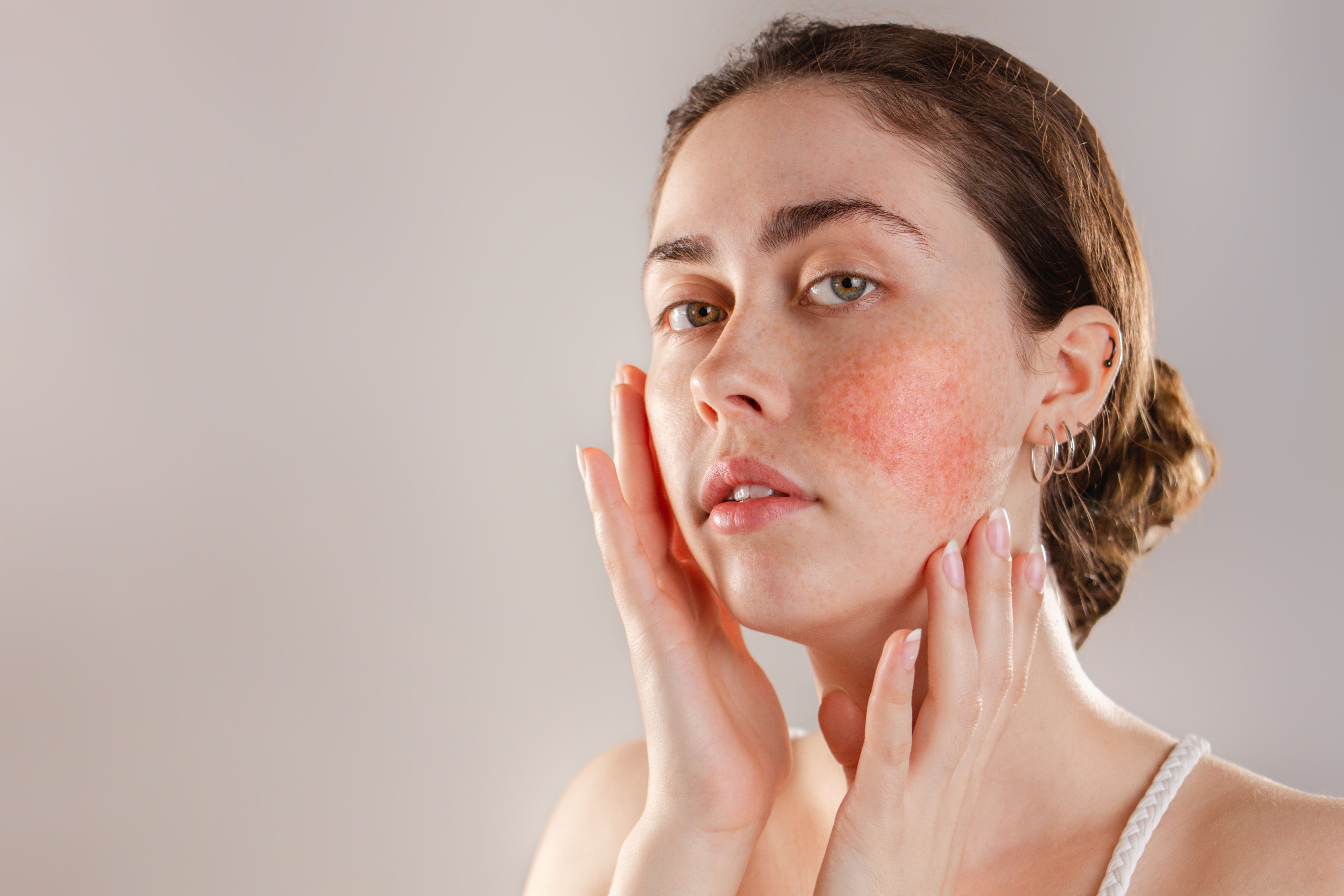 In addition, adults experiencing heat rash can try the following:
In addition, adults experiencing heat rash can try the following:
- Wear a sweat-wicking hat. This will draw moisture and sweat away from the body.
- Take cold showers. Showering in cool or cold water will remove sweat from the face while cooling the skin.
Heat rash can be divided into three categories: Miliaria crystallina, Miliaria rubra, and Miliaria profunda. All three will present slightly differently, and here we’ll discuss what each form of heat rash looks like.
Miliaria crystallina
This is the least severe type of heat rash and it’s more common in children and babies than adults. It may not itch or burn, and the small clustered bumps on the skin will appear clear or flesh-toned.
The bumps are filled with sweat and you may notice them bursting. Heat rash in children can sometimes look like baby acne.
Miliaria rubra
Miliaria rubra is also what’s known as prickly heat. It’s more common in adults than in children and it causes red, itchy or prickly-feeling bumps on the skin. The affected area may also look inflamed, because sweat pools underneath.
The affected area may also look inflamed, because sweat pools underneath.
Miliaria profunda
Miliaria profunda is considered the most severe type of heat rash. It is more common in adults than in children or babies. It produces large, flesh-toned bumps on the skin and the bumps may feel tough or hard.
In addition to a noticeable rash on the skin that often looks like a cluster of small pimples, there can be other symptoms associated with heat rash. These include:
- red, inflamed skin
- skin that feels hot to the touch
- itching and burning on the affected area
Fortunately, there are ways to prevent heat rash on the face in both adults and babies.
Babies and children
- Take a break. If you’re outside at the beach or a playground, check in with your child to make sure they are not getting overheated. Signs of overheating include damp clothes, flushed cheeks, and panting.
- Hydrate. Give your child plenty of cool or cold water if they’re old enough to drink water.
 Staying hydrated helps keep the body’s temperature down.
Staying hydrated helps keep the body’s temperature down. - Get a breathable pillow case. If your child is experiencing heat rash on their face while sleeping, swap their pillowcase to a breathable fabric like cotton or linen. Heat rash often occurs in skin folds or in areas that don’t get a lot of circulation.
- Go inside where there is a fan or air conditioning. On hot days, make sure to take breaks to cool off in an air-conditioned room or near a fan.
Adults
Adults can try the same methods as babies and children. In addition, adults can try the following:
- Apply unscented talcum powder to the face. This can absorb excess sweat and helps prevent the ducts from clogging.
- Apply a cold compress. If you feel your skin overheating, apply an ice pack or a cold compress to the area. Putting your head in the freezer for a minute also works to instantly cool down the face.

If at-home remedies aren’t working or heat rash symptoms seem to be getting worse on you or your baby, or if you’re experiencing the following symptoms, seek medical help:
- fever
- sore throat
- a rash that looks infected
- pus or oozing
- a rash that persists for more than a week
Heat rash typically occurs in hot and humid temperatures when the body overheats and sweat ducts become clogged. There are different types, but generally a heat rash will look like red or flesh-toned bumps on the skin.
Symptoms of heat rash include redness, an itching or burning sensation, and inflamed, irritated skin.
You can prevent heat rash on the face in yourself and in your child by staying hydrated, going inside or into water on hot days to cool off, and wiping away sweat.
If you or your child already has heat rash, calamine lotion, anhydrous lanolin, oatmeal paste, and cool compresses can all be helpful at alleviating symptoms and clearing the rash.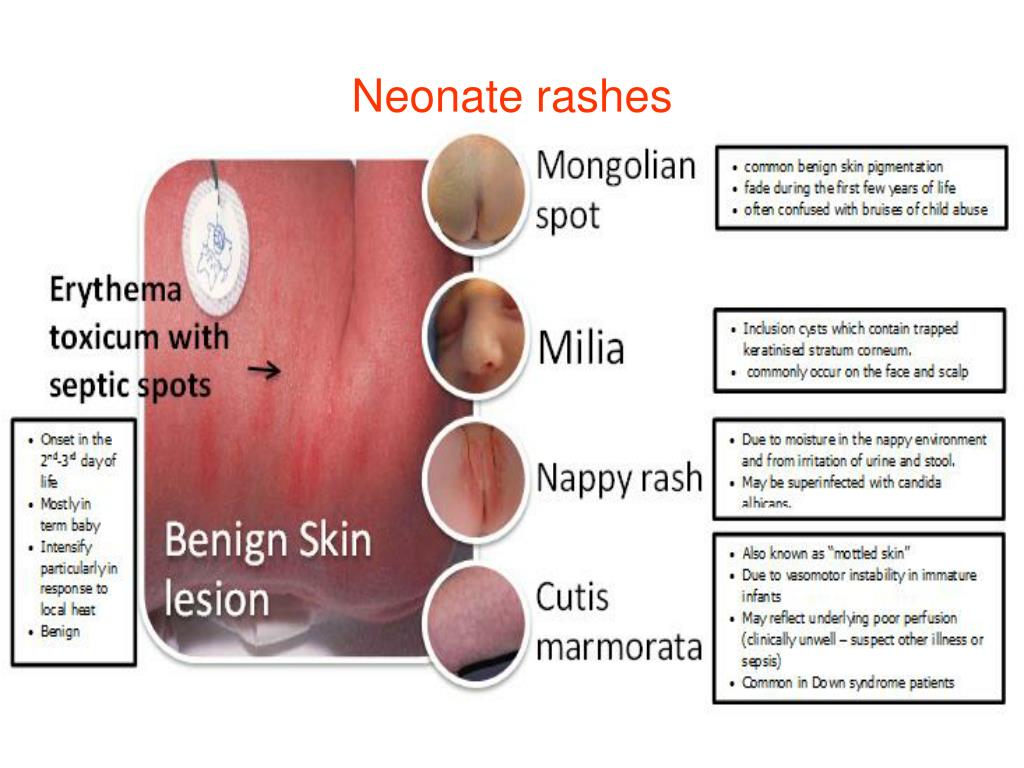
Contact a medical professional if symptoms persist or get worse, or if there are other symptoms like fever, sore throat, or oozing.
Last medically reviewed on May 17, 2021
How we reviewed this article:
Healthline has strict sourcing guidelines and relies on peer-reviewed studies, academic research institutions, and medical associations. We avoid using tertiary references. You can learn more about how we ensure our content is accurate and current by reading our editorial policy.
- 12 summer skin problems you can prevent. (n.d.).
aad.org/public/everyday-care/skin-care-secrets/routine/prevent-summer-skin-problems - Guerra K, et al. (2020). Miliaria.
ncbi.nlm.nih.gov/books/NBK537176/ - Heat rash. (n.d.).
seattlechildrens.org/conditions/a-z/heat-rash/ - Kurtz E, et al. (2007). Colloidal oatmeal: History, chemistry, and clinical properties.
pubmed.ncbi.nlm.nih.gov/17373175/ - Skin care for your baby.
 (2007).
(2007).
ncbi.nlm.nih.gov/pmc/articles/PMC2528704/
Our experts continually monitor the health and wellness space, and we update our articles when new information becomes available.
Current Version
May 17, 2021
Written By
Grace Gallagher
Edited By
Allison Tsai
Medically Reviewed By
Cynthia Taylor Chavoustie, MPAS, PA-C
Copy Edited By
Megan McMorris
Share this article
Medically reviewed by Cynthia Taylor Chavoustie, MPAS, PA-C — By Grace Gallagher on May 17, 2021
Read this next
- The Full Lowdown on Heat Rash
Medically reviewed by Alana Biggers, M.D., MPH
Heat rash is a skin condition that often affects children and adults in hot, humid weather conditions. We explain possible remedies and types.
READ MORE
- Home Remedies for Heat Rash
Medically reviewed by Debra Sullivan, Ph.D., MSN, R.N., CNE, COI
Heat rash is a painful condition that occurs in hot weather when sweat pores become blocked.
 Learn more about the condition and its treatments here.
Learn more about the condition and its treatments here.READ MORE
- What to Know About Heat Rash in Babies
Medically reviewed by Mia Armstrong, MD
Heat rash is a skin condition caused by blocked sweat ducts. Discover what you can do to soothe your baby’s heat rash and prevent rashes in the future.
READ MORE
- How to Recognize a Sun Rash
Medically reviewed by Stacy Sampson, D.O.
Sun rash is a red, itchy rash that appears because of exposure to sunlight. One common type is polymorphic light exposure (PMLE).
READ MORE
- Identifying and Treating Teething Rashes
Medically reviewed by Karen Gill, M.D.
Is your baby’s rash from teething or something else? We share tips for identifying rashes with teething, plus pictures of teething rashes versus other…
READ MORE
- What Causes Excessive Scrotal Sweating, and How Can I Treat It?
If excessive testicular sweating is interfering with your day-to-day life, these treatments may help.
 Learn about the causes of excessive testicular…
Learn about the causes of excessive testicular…READ MORE
- How to Remove Scars on Legs
Medically reviewed by Cynthia Cobb, DNP, APRN, WHNP-BC, FAANP
Here are simple tips to reduce the appearance of scars. Whether you want to know how to get rid of scars on your legs or other areas, here’s what to…
READ MORE
- What Causes a Melasma Mustache and How to Treat It
Medically reviewed by Susan Bard, MD
Melasma is a skin condition that causes grayish-brown patches to appear, mostly on the face. When it appears on the upper lip, it’s referred to as a…
READ MORE
- Is it Possible for Humans to Get Mange?
Mange is commonly seen in animals, but humans can develop this skin condition as well.
READ MORE
- Is There a Lipoma Cure?
Medically reviewed by Cynthia Cobb, DNP, APRN, WHNP-BC, FAANP
Lipomas are slow growing soft masses of fat cells that are typically found between the skin and underlying muscle in the neck, shoulders, and back…
READ MORE
How to diagnose heat rash – advice from a dermatologist
How to diagnose heat rash – advice from a dermatologist
Recording 24/7
Find the center and
register for diagnostics
+7(812)209-29-49
How to diagnose heat rash: Heat rash (prickly heat) is uncomfortable but usually harmless and in most cases goes away on its own after a few days. The initial diagnosis of heat rash will require a consultation with a dermatologist or pediatrician. Heat rash manifests itself in the form of raised spots ranging in size from 2 to 4 mm. Some lesions may be filled with fluid.
Quick navigation
Symptoms of prickly heat
Symptoms of heat rash are often the same in adults and children:
- small raised spots
- itching, tingling
- mild swelling of the skin
- the rash often looks red.

Miliaria can appear anywhere on the body, but cannot be passed on to other people.
Causes of heat rash
Heat rash usually occurs due to excessive sweating, when a person’s sweat glands become blocked and the accumulated sweat causes a rash after a few days. Babies are more likely to develop prickly heat because they can’t control their temperature as well as adults.
Diagnosis of heat rash
The patient should make an appointment with a dermatologist or pediatrician if the rash does not go away after a few days. During the initial examination, the doctor will usually be able to make a diagnosis and suggest treatment options.
Treatments for heat rash
The main treatment for rash is to keep the skin cool so as not to sweat and cause irritation.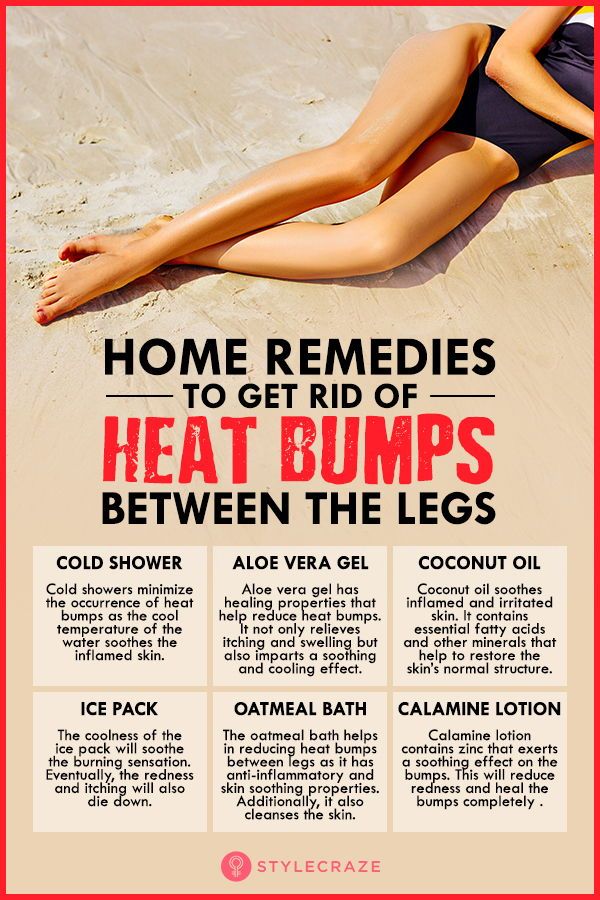 To do this, you can:
To do this, you can:
- wear loose cotton clothing
- take a cool bath or shower
- drink plenty of fluids to avoid dehydration.
To soothe itching or tingling:
- apply something cold, such as a damp cloth or an ice pack (wrapped in a kitchen towel) for up to 20 minutes
- pat the rash instead of scratching it
- do not use perfumed shower gels or creams.
- Pharmacist can recommend:
- sunburn antihistamine tablets
- hydrocortisone cream.
Author: Belyakov Nikolai Grigorievich
Specialization: Pediatrician
Where does the reception: Clinic General Medical Center (GMC), St. Petersburg
9000 5 Share:
The best specialists in St. Petersburg with a rating 4.5+
Bortuleva Victoria Valerievna
Specialization: Dermatologist
Medical experience: since 2006
Where does the appointment: Infectious clinic ID-Clinic, Center for Medical Mycology. Kashkin
Kashkin
Kozminsky Evgeny Borisovich
Specialization: Dermatologist
Medical experience: since 1997
Where does the appointment: ID-Clinic Infectious Diseases Clinic, City Department of Internal Affairs
Podkovyrkina Alena Anatolyevna
Specialization: Dermatologist, Trichologist
Medical experience: since 2013
Where does the reception: MC Baltmed Ozerki
Volnitsky Ivan Vasilyevich
Specialization: Dermatologist, Trichologist
Medical experience: since 2012
Where does the appointment: MC Baltmed Ozerki, Cosmetology Equigene
Kutkovich Andrey Vladimirovich
Specialization: Oncologist, Dermatologist, Mammologist, Surgeon
Medical experience: since 2010
Where does the appointment: MC Baltmed Ozerki, CDC 78, Department of Early Diagnosis and Cancer Prevention
Popov Petr Vasilyevich
Specialization: Dermatologist, Trichologist
Medical experience: since 2002
Where does the reception: MC Baltmed Ozerki
Borisov Sergey Vladimirovich
Specialization: Oncologist, Dermatologist, Mammologist, Surgeon
Medical experience: since 1987
Where does the appointment: Baltmed Ozerki clinic, MEDIKA Gzhatskaya clinic, Poema Zdorovya Clinic
Lysova Valentina Yurievna
Specialization: Dermatologist
Medical experience: since 2015
Where does the reception: MC Baltmed Ozerki
Narchaeva Selbi Agaevna
Specialization: Dermatologist
Medical experience: since 2001
Where does the reception: MC Baltmed Ozerki, MC Dynasty Lenina
Khostikoeva Kamilla Kazbekovna
Specialization: Dermatologist
Medical experience: since 2018
Where does the reception: MC Baltmed Ozerki
Shtylina Julia Vadimovna
Specialization: Dermatologist
Medical experience: since 2016
Where does the reception: MC Medicenter
Starkov Sergey Viktorovich
Specialization: Dermatologist
Medical experience: since 2004
Where does the reception: MC Medicenter
Pivak Anastasia Viktorovna
Specialization: Dermatologist
Medical experience: since 2018
Where does the reception: MC Medicenter
Shvyrev Denis Nikolaevich
Specialization: Dermatologist
Medical experience: since 2012
Where does the reception: MC Medpomoshch 24 Zanevsky
Semyonova Maya Anatolyevna
Specialization: Dermatologist
Medical experience: since 2003
Where does the reception: MC Medpomoshch 24 Balkan
Makovey Yana Nikolaevna
Specialization: Dermatologist
Medical experience: since 2013
Where does the reception: MC Medpomoshch 24 Balkansky, MC REMEDY, MC AsMedia Chernyshevsky
Sokolov Grigory Nikitich
Specialization: Dermatologist
Medical experience: since 1998
Where does the reception: MC March
Balaban Olga Ivanovna
Specialization: Dermatologist
Medical experience: since 2009
Where does the reception: MC Energo Kyiv
Gordienko Leonid Alekseevich
Specialization: Dermatologist
Medical experience: since 1988
Where does the reception: MC Energy of Health, City Multidisciplinary Hospital No. 2
2
Vetlitsky Dmitry Anatolyevich
Specialization: Dermatologist
Medical experience: since 1989
Where does the reception: MC Longa Vita, ABIA on the Queen
Oleg Kudlak
Specialization: Dermatologist, Surgeon, Proctologist
Medical experience: since 2012
Where does the reception: MC Longa Vita, Medical On Group for Veterans
Yankelevich Elizaveta Ilyinichna
Specialization: Dermatologist
Medical experience: since 2015
Where does the reception: MC Longa Vita
Litenev Leonid Andreevich
Specialization: Dermatologist
Medical experience: since 2016
Where does the appointment: SM-Clinic on Marshal Zakharov, SM-Clinic on Vyborgsky
Smirnov Konstantin Valerievich
Specialization: Dermatologist
Medical experience: since 1999
Where does the reception: SM-Clinic on Malaya Balkanskaya
Pisarenko Natalia Leonidovna
Specialization: Dermatologist
Medical experience: since 1996
Where does the reception: SM-Clinic on Udarnikov
Kolesnikova Ekaterina Vladimirovna
Specialization: Dermatologist
Medical experience: since 2016
Where does the appointment: SM-Clinic on Marshal Zakharov, MEDSI Clinic St.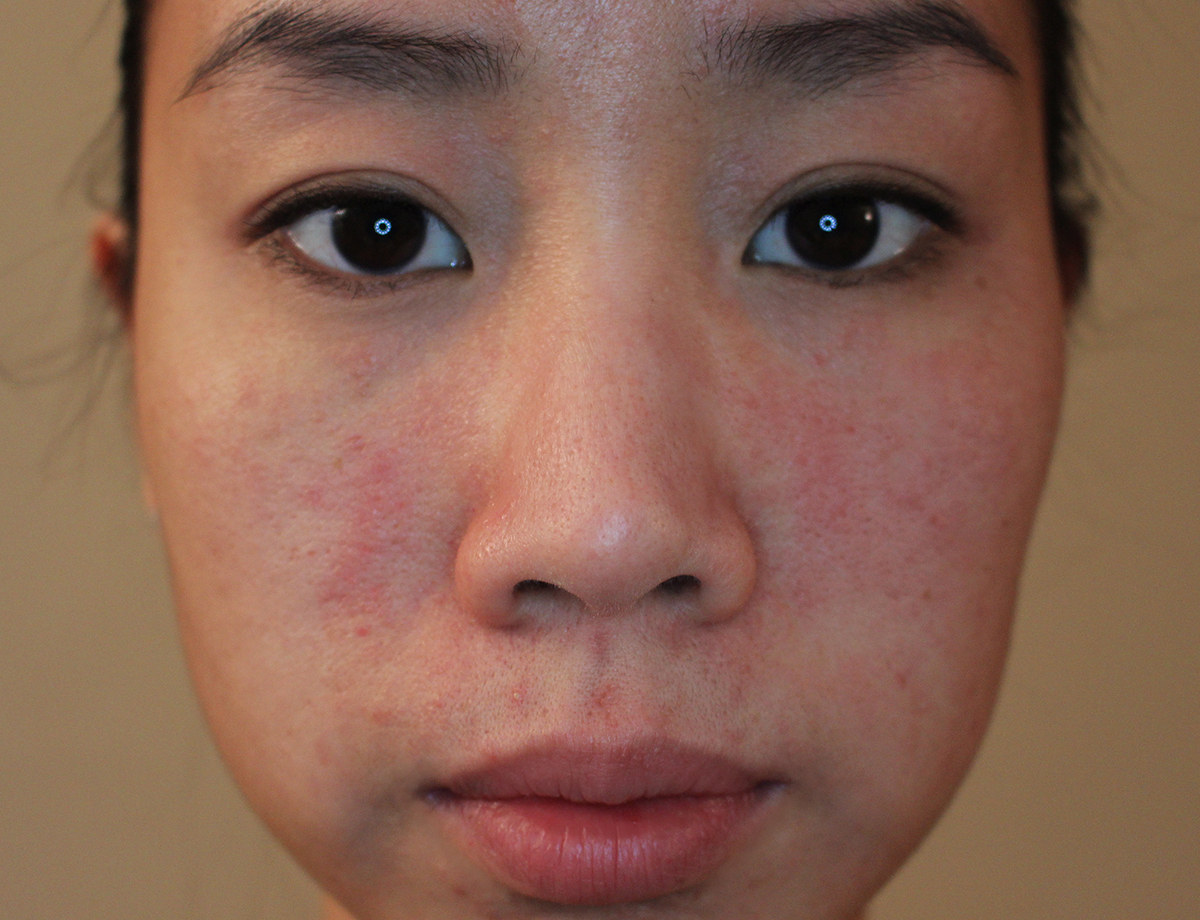 Petersburg
Petersburg
Protopopov Daniil Olegovich
Specialization: Dermatologist
Medical experience: since 2014
Where does the appointment: SM-Clinic on Udarnikov, SM-Clinic on Danube
Ibragimov Grigory Yurievich
Specialization: Dermatologist
Medical experience: since 1989
Where does the appointment: SM-Clinic on Danube, SM-Clinic on Malaya Balkanskaya, Desir Clinic on Moskovsky
Barbinov Denis Vyacheslavovich
Specialization: Dermatologist
Medical experience: since 2010
Where does the reception: SM-Clinic on Marshal Zakharov, SM-Clinic on Udarnikov
Galich Margarita Dmitrievna
Specialization: Dermatologist
Medical experience: since 2006
Where does the reception: SM-Clinic on Vyborgsky
Dyshko Larisa Anatolyevna
Specialization: Dermatologist
Medical experience: since 1999
Where does the reception: SM-Clinic on Danube
Zinovieva Tatyana Vladimirovna
Specialization: Dermatologist
Medical experience: since 2007
Where does the reception: SM-Clinic on Vyborgsky
Kurbanbayeva Gozel Bakhtiyarovna
Specialization: Dermatologist
Medical experience: since 2018
Where does the reception: SM-Clinic on Marshal Zakharov, SZTSDM on Bogatyrsky, LIK Cosmetology Center (LIK)
Lukyanchuk Maxim Vladimirovich
Specialization: Dermatologist
Medical experience: since 2017
Where does the appointment: SM-Clinic on Malaya Balkanskaya, Desir on Kolomyazhsky, Desir Clinic on Moskovsky
Mozgova Olga Viktorovna
Specialization: Dermatologist
Medical experience: since 1981
Where does the reception: SM-Clinic on Udarnikov
Romanova Alena Olegovna
Specialization: Dermatologist
Medical experience: since 2015
Where does the appointment: SM-Clinic on Vyborgsky, Clinic A-media
Semyachkov Sergey Viktorovich
Specialization: Dermatologist
Medical experience: since 2010
Where does the appointment: SM-Clinic on Vyborgsky, Podology Center on Petrogradskaya
Utkina Natalya Aleksandrovna
Specialization: Dermatologist
Medical experience: since 2003
Where does the reception: SM-Clinic on Vyborgsky
Khramovich Anastasia Vladimirovna
Specialization: Dermatologist
Medical experience: since 2011
Where does the reception: SM-Clinic on Malaya Balkanskaya
Shurkus Inna Vladimirovna
Specialization: Dermatologist
Medical experience: since 1989
Where does the reception: SM-Clinic on Danube
References:
- Adaskevich V.
 P. Diagnostic indices in dermatology. M.: Medical book, 2004. – S.24-43.
P. Diagnostic indices in dermatology. M.: Medical book, 2004. – S.24-43. - Altmayer P. Therapeutic handbook of dermatology and allergology./ Per. with him. ed. A.A. Kubanova – M .: GEOTAR-MED. – 2003. -1248s.
- Glukhenky B.T., Delektorsky V.V., Fedorovskaya R.F. Pustular diseases of the skin. K .: Zdorov’ya, 1983. – 136s.
- Kalamkaryan A.A., Bukharovich A.M. Chronic staphylococcal skin infection. -K.: Health, 1990. – 136p.
- Kamakina M.V. Adult acne: differential diagnosis and differentiated approach to treatment. Diss. .cand. honey. nauk.- M., 2002.-144 p.
Latest diagnostic articles
How MRI, Ultrasound, CT, X-Ray and PET work
In modern medicine, thanks to advances in technology, there is a wide range of diagnostic equipment that helps doctors in the early detection of diseases and pathological disorders. In this article we will talk about the principles of operation of MRI, ultrasound, CT,
Read more
Where to get an MRI in St.
 Petersburg?
Petersburg?
In order to undergo an MRI at medical centers in St. Petersburg, you need to make an appointment for diagnostics. Addresses and prices for the tomography service in various clinics will be prompted to you in our appointment center. In the database we have information about more than 80 diagnostic clinics in St. Petersburg and the Leningrad region.
Read more
Everything you need to know about heat rash
There are many types of rashes that can develop on your skin. Each type of rash can have different effects. Some of them may cause more discomfort. Some may be more painful and others may even make you worry about them.
Heat rash occurs when the body sweats, for example, in hot weather or when you exercise, and the pores are clogged for various reasons. Since sweat is not removed from the body, heat rash can occur.
Heat rash can affect both adults and children and all racial groups. For example, the mildest type of heat rash, prickly heat, affects about 9% of newborns and 30% of adults exposed to hot weather, such as those living in tropical regions of the world.
For example, the mildest type of heat rash, prickly heat, affects about 9% of newborns and 30% of adults exposed to hot weather, such as those living in tropical regions of the world.
Heat rash is sometimes easily mistaken for acne.
Heat rash is also known as prickly heat. Depending on how severe the rash is and how affected the sweat ducts are, heat rash can be divided into:
- Miliaria crystallina;
- Miliaria rubra;
- Pustular prickly heat;
- Miliaria profunda.
Heat rash is also known as “stinging heat” because people who suffer from heat rash report a stinging sensation when the rash appears. However, heat rash is not always accompanied by a tingling sensation, as not everyone who suffers from it feels like this.
It is important to know that heat rash can affect everyone:
- Any adult who exercises while wearing a mask or in hot weather;
- In any child, as in the first days of his life, the sweat glands are not yet fully developed;
- Any adult who wears a mask for a long time;
- Any pregnant woman, as her body temperature may be higher than normal;
- Any patient who is in bed for a long time.

Heat rash symptoms
Heat rash usually occurs on adjacent areas of the body. Heat rash can also occur as a result of friction between the thighs and jeans, for example, but it can also develop due to elevated body temperature. Most often, people develop a heat rash between the inner thighs or under the arms.
The symptoms depend on the type of heat rash you have. Even though all types of heat rash affect the skin and can cause discomfort, some of them can change it more seriously:
- The mildest type of heat rash is called crystal prickly heat. This type of heat rash only affects the surface of the skin. When a rash appears, clear fluid-filled blisters and bumps appear that burst easily.
- Red prickly heat is the most common type of heat rash. The area of skin affected by miliaria erythematosus is usually itchy and has numerous red bumps. This type of heat rash affects both newborns and adults. As an adult, you may develop prickly heat after a long stay in a tropical area or in another place with a hot climate.
 An attack of prickly heat or heat rash will not occur immediately; some time must elapse between your arrival in a zone with a hot climate and the first signs of skin inflammation. Heat rash usually peaks after a couple of months.
An attack of prickly heat or heat rash will not occur immediately; some time must elapse between your arrival in a zone with a hot climate and the first signs of skin inflammation. Heat rash usually peaks after a couple of months. - Pustular prickly heat is the same as prickly heat, except that the papules become pustules as the rash becomes inflamed and eventually filled with pus.
- A serious and less common type of heat rash is prickly heat . Deep prickly heat usually affects people who have been exposed to heat for a long time and people who are overweight. This type of heat rash affects the dermis, located between the epidermis and subcutaneous tissue. Sweating that is not eliminated due to blockage of the sweat ducts seeps into the skin and causes some hard lesions that are the same color as the skin. Some believe that this rash resembles goosebumps. It is very important to know that deep prickly heat is actually rare and common in adults.
Symptoms that may be associated with heat rash and indicate a potential hazard:
- Fever and chills;
- Severe pain, swelling, redness or even warmth in the affected area of the skin;
- Pus dripping from affected skin;
- Swollen lymph nodes in the groin, armpits or neck;
- Skin inflammation and irritation does not disappear after a couple of days of self-care and cooling.

Heat rash on the skin
Common symptoms of heat rash include red bumps on the affected area of the skin. In addition to the skin being visibly inflamed, the affected person may also feel itchy or even tingly.
The bumps are associated with the most common type of heat rash, medically known as prickly heat, which also affects children and adults.
Heat rash bumps usually result from increased skin temperature due to exposure to very warm climates or increased friction between skin and clothing or any other material.
Heat rash bumps will disappear if the skin is allowed to cool or if the friction between the affected area and clothing is reduced.
Heat rash with blisters
Heat rash with blisters is a skin disease associated with crystal prickly heat. Heat rash blisters are filled with fluid and break easily.
Blisters are caused by intense friction between the skin and other materials such as clothing or shoes.
Fluid collects in the blisters and protects the tissues underneath. The fluid that fills the blister is called serum. The affected tissue will be clean, and all conditions for healing will be created in it.
Heat rash on the face
Heat rash, or prickly heat, as it is called in medicine, is a skin reaction resulting from excessive sweating. This irritation usually occurs when pieces of clothing or other materials block the pores and sweat remains inside the skin. For example, heat rash on the face can be stimulated by wearing masks or scarves.
Sweat glands that do not expel sweat become inflamed and irritate the surrounding skin. Therefore, the skin will turn red and possibly begin to itch.
It is important to know that heat rash is not dangerous, but can be really annoying. Because you have pores all over your body, heat rash can appear on any part of your body, even your face.
Heat rash on the face usually looks like a cluster of red bumps. Heat rash marks on the face can sometimes even be filled with fluid, like blisters. In very rare cases, heat rash papules can transform into pustules. This means that the red and itchy patches are filled with pus.
Heat rash marks on the face can sometimes even be filled with fluid, like blisters. In very rare cases, heat rash papules can transform into pustules. This means that the red and itchy patches are filled with pus.
Four types of heat rash can appear on your face:
- Miliaria crystallina;
- Miliaria rubra;
- Pustular prickly heat;
- Miliaria profunda.
Each type of heat rash affects the skin of the face differently, namely:
- Crystal prickly heat is represented by very tiny blisters around which there is no inflammation.
- Red prickly heat is accompanied by clusters of red bumps, which usually cause itching.
- Pustular prickly heat is similar to red prickly heat, but the bumps are filled with pus.
- Deep prickly heat occurs in the lower layers of the skin, resulting in large irregularities on the upper layer of the skin, which take longer to heal.
Heat rash usually occurs in areas covered by clothing. The sweat glands can become blocked by clothing or other skin coverings you wear, and so they become inflamed.
The sweat glands can become blocked by clothing or other skin coverings you wear, and so they become inflamed.
Heat rash usually results from wearing tight clothing such as sportswear. In order for a heat rash to appear on the face, it is necessary to wear masks or other types of protective clothing for a long time.
The ideal conditions for developing facial heat rash are when you wear a mask or other face covering while exercising or in a warm climate. Sweat gets blocked in the sweat ducts and gets stuck.
In addition, heat rash can occur at any time and in any weather as a result of rubbing against a mask or other fabric you wear, such as a scarf.
It is important that the inflamed area does not disturb. You must leave the place cool and dry.
If you must wear a mask, make sure you wash it thoroughly after use, and if it is a disposable mask, be sure to discard it after use. In addition, it is better to have more clean masks and change them throughout the day to avoid getting saliva, mucus or other substances from the mask on the skin. It is also very important to ensure that the mask does not rub the skin.
It is also very important to ensure that the mask does not rub the skin.
If the heat rash on the face does not go away after a couple of days, a doctor should be consulted. If a heat rash becomes infected, it can lead to scarring and can adversely affect your appearance.
If you go to see a doctor, he will carefully examine the affected areas of the skin. Then he will ask you when the irritation occurred, what you were doing before the inflammation, and what you were wearing. Based on the answers you give him and the analysis done by your doctor, he will be able to tell if you have a heat rash or not.
Heat rash on the neck
Heat rash on the neck is usually an attack of crystal prickly heat. This happens for the same reasons as a heat rash on the face, as the mask or scarf you are wearing can cover your neck and cause rubbing against the skin of your neck. In addition, it can interfere with the sweating process and cause inflammation and irritation of the skin.
Heat rash in groin and heat rash on inner thigh
The groin and inner thigh are two areas of the body that are prone to heat rash. Usually, these areas of the body are covered with tight clothing such as tight pants or underpants. Friction between the skin of the groin or inner thigh and these garments can easily cause inflammation and irritation.
To reduce inflammation, it is best to wear looser pants and shorts for a day or two. If there is no friction between the clothing and the inflamed area, there will be enough space on the skin for normal breathing and healing.
Heat rash on the legs
Heat rash can usually appear anywhere on the body, as it is the result of unexcreted sweating.
Heat rash can also affect the skin of the legs. The usual symptoms of this skin inflammation consist of red bumps and itching. The area affected by heat rash on the legs consists of reddened skin with small blisters. It is likely that if you have a heat rash on your legs, the inflammation occurred after wearing tight pants and there was not enough room for air to circulate.
Baby heat rash
Babies are prone to rash in the first days of their lives. Most often, a rash appears on the neck, as well as in the skin folds of the armpits, elbows or thighs.
Heat rash also affects infants. When overheated, they develop a smooth pink rash.
The main symptoms of heat rash in infants are tiny pink bumps on the neck, chest, or upper back. The rash can also cause itching and small water blisters. Heat rash affects infants during very warm and humid weather or after exposure to the sun.
Babies are prone to heat rash mainly because their sweat ducts are not yet fully developed, so sweating can be difficult. In addition, babies may develop heat rash due to ointments, as they can directly block the sweat glands.
Heat rash on the forehead of a child may be caused by various oils or ointments applied to the head. Heat rash on a child’s face may be the result of the child’s face touching another person’s face, such as his or her mother’s face, to which a cream or lotion has recently been applied. A heat rash on the neck can be the result of using menthol ointments to stop a cough.
A heat rash on the neck can be the result of using menthol ointments to stop a cough.
Diagnosis of heat rash
Heat rash usually resolves within a few days. In some cases, heat rash may not go away as quickly as you would like. In such cases, heat rash can become infected and even lead to scarring. Therefore, if you notice that you have a persistent heat rash, you should contact your doctor.
Seeing a doctor should be fairly quick, as a heat rash can hide a more dangerous condition. Heat rash itself is not a dangerous skin condition and should be easily diagnosed and treated.
Because there are no specific tests that can confirm heat rash, your doctor will take a close look at the affected area of your skin and ask you about the activities you were doing prior to the onset of irritation and how you were dressed at the time. In most cases, a doctor will easily detect a heat rash.
Heat rash treatment
Usually any heat rash should disappear within a few days. To make the disease go away easily, do not touch this area and make sure it is dry and not exposed to heat.
To make the disease go away easily, do not touch this area and make sure it is dry and not exposed to heat.
Because neither type of heat rash is dangerous, you can take care of it from the comfort of your home.
The best thing you can do to treat heat rash at home:
- Take a bath or shower with warm water. Try rinsing the affected area with cool water and letting it air dry.
- Gently apply a cold compress to the irritated area to reduce or even relieve pain and itching.
- Avoid high temperatures. If it is very hot outside, you can try to stay indoors, preferably in a room that is well circulated with a fan or cooled by an air conditioner, until your symptoms go away or you feel better.
- Avoid wearing tight clothing such as tight jeans or sportswear. Loose clothing will give your skin the space it needs to breathe properly and eliminate perspiration to heal.
- Keep hydrated during hot weather.
- Avoid applying greasy creams and any other products containing oil over the rash.
 These foods may even make the irritation worse, as they can further block the sweat glands.
These foods may even make the irritation worse, as they can further block the sweat glands.
On very rare occasions, you will need over-the-counter medications to relieve your heat rash symptoms. If you find yourself in a situation where you need medication to treat a heat attack, you should consult your pharmacist or doctor. A doctor will usually recommend calamine lotion or antihistamine creams to relieve itching and soothe the rash.
Prevention of heat rash
If you find that you have a heat rash, it is very important to find out the cause. Avoiding factors that cause skin irritation and inflammation can easily make your life more comfortable.
In general, avoid exposure to heat and tight clothing. If you really need to do something under the hot sun, it’s highly recommended to take a cool shower afterwards. Loose clothing can also prevent clogged sweat glands.
Conclusion
Heat rash is an inflammation of the skin that is most often stimulated by exposure to heat or friction from tight clothing.

 If the rash is all over, try a cool bath without soap.
If the rash is all over, try a cool bath without soap. Staying hydrated helps keep the body’s temperature down.
Staying hydrated helps keep the body’s temperature down.
 (2007).
(2007). Learn more about the condition and its treatments here.
Learn more about the condition and its treatments here. Learn about the causes of excessive testicular…
Learn about the causes of excessive testicular…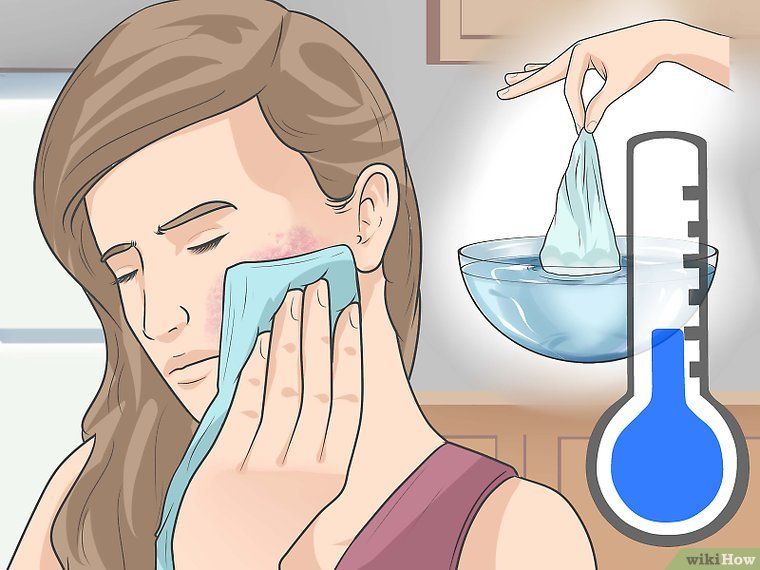 If the rash is all over, try a cool bath without soap.
If the rash is all over, try a cool bath without soap. Staying hydrated helps keep the body’s temperature down.
Staying hydrated helps keep the body’s temperature down.
 (2007).
(2007).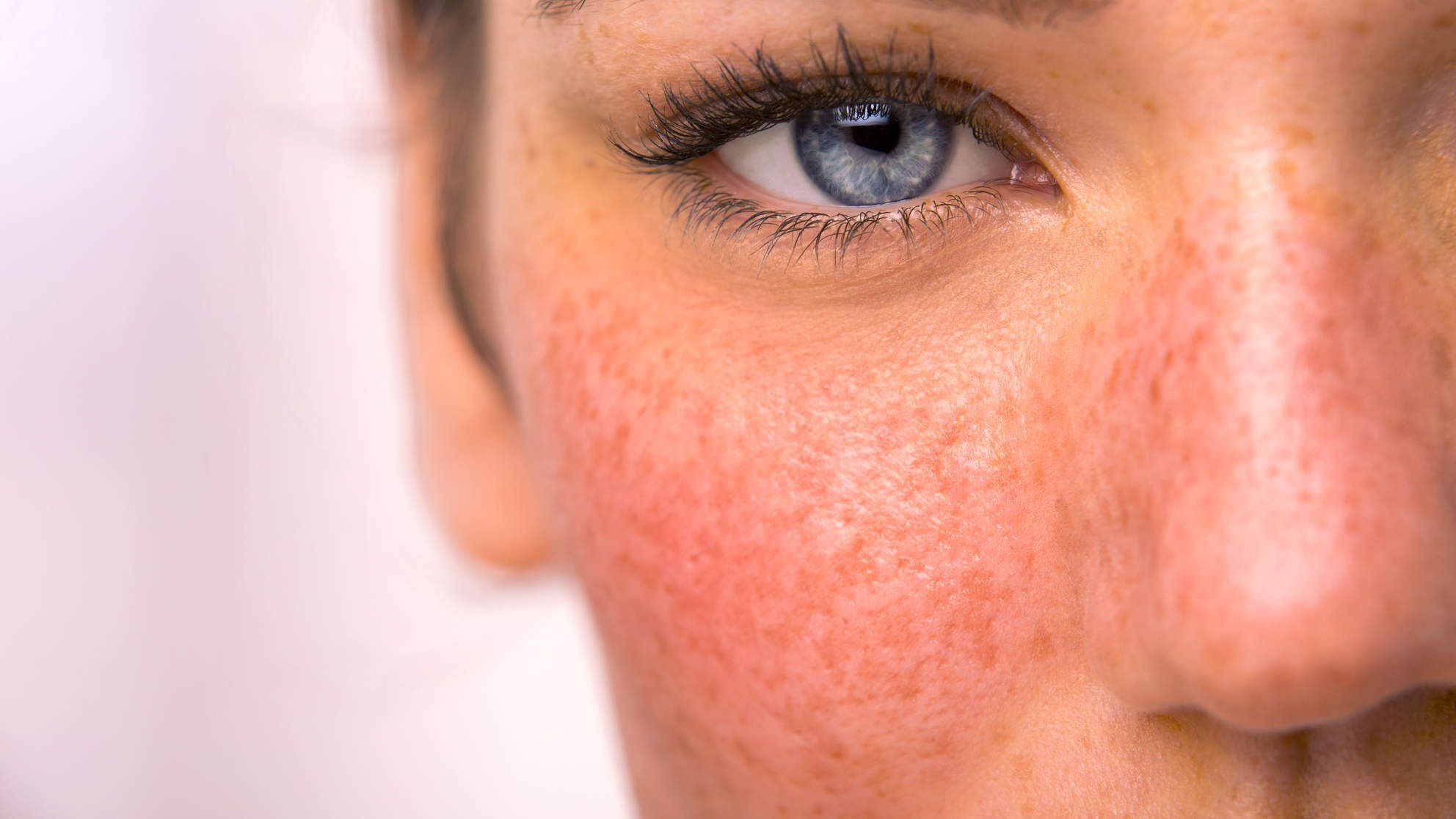 Learn more about the condition and its treatments here.
Learn more about the condition and its treatments here. Learn about the causes of excessive testicular…
Learn about the causes of excessive testicular… P. Diagnostic indices in dermatology. M.: Medical book, 2004. – S.24-43.
P. Diagnostic indices in dermatology. M.: Medical book, 2004. – S.24-43.
 An attack of prickly heat or heat rash will not occur immediately; some time must elapse between your arrival in a zone with a hot climate and the first signs of skin inflammation. Heat rash usually peaks after a couple of months.
An attack of prickly heat or heat rash will not occur immediately; some time must elapse between your arrival in a zone with a hot climate and the first signs of skin inflammation. Heat rash usually peaks after a couple of months.
 These foods may even make the irritation worse, as they can further block the sweat glands.
These foods may even make the irritation worse, as they can further block the sweat glands.